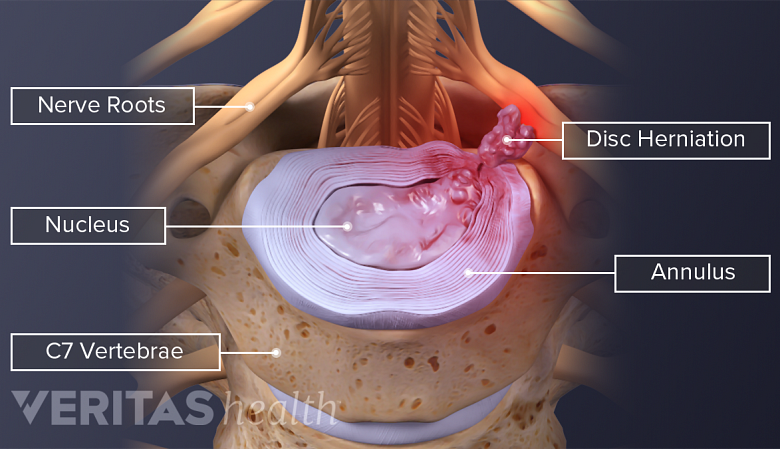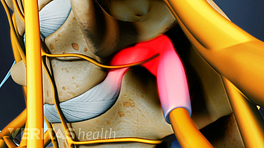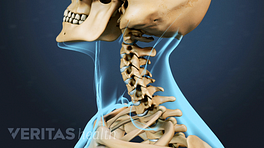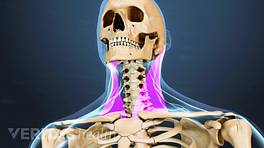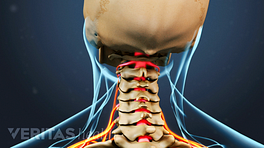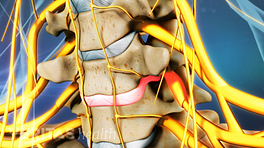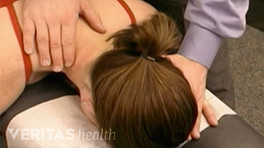Chiropractic manipulation can address a number of causes of neck pain. It is not a treatment for every type of neck problem, but on the other hand is also considered a first line of treatment for many.
Two typical causes of pain that originate in the neck and may be treated by manipulation include mechanical neck pain and disc problems.
In This Article:
- Chiropractic Manipulation for the Cervical Spine
- Typical Cervical Problems Treated by Chiropractic
- Spinal Manipulation for Cervical Joint Dysfunction
- Gentle Chiropractic Techniques for Neck Pain
- Chiropractic Adjustment of the Cervical Spine (Neck) Video
Mechanical Neck Pain
Mechanical neck pain includes pain generated from muscle, tendons, joint capsules, ligaments and/or the fascia. This type of problem is a common cause of neck pain and stiffness. Most of the time, many of these tissues are simultaneously injured and can cause pain both locally as well as at a distance away from the injury site.
See Stiff Neck Causes, Symptoms, and Treatment
Facet joint problems are a good example of mechanical neck pain. The facets are located in the back of the neck, about 1 inch from each side of the midline. When a facet joint is sprained or injured, pain may be localized and/or referred pain a distance away from the neck injury, such as into the shoulder blade, upper back and even into the arm. The referred pain pattern is unique and depends on the specific spinal level of the cervical spine that is involved.
Cervical Disc Problems
Cervical disc herniation occurs when inflammatory proteins from a disc's inner core leak out.
Tears can develop in the cervical disc and/or the inside of the disc (the nucleus) can herniate through the outer part (the annulus) and trap or pinch the nerve root as it exits the spine.
See Cervical Herniated Disc Symptoms and Treatment Options
Cervical nerve root irritation can frequently refer pain down the arm and into the hand, usually affecting specific regions such as the 4th and 5th digits, the palm side thumb to 3rd fingers and/or the back of the hand on the thumb, index finger side of the hand, depending on which nerve root is irritated.
Read more: What Is Cervical Radiculopathy?
On rare occasions, if the nucleus of the disc herniates straight backwards, it can compress the spinal cord and create symptoms in the legs and even affect the function of the bowels and/or bladder. On these rare occasions, the patient needs to be referred to a spine surgeon for immediate medical attention.
The above are two broad examples of types of cervical spine problems that may be treated with cervical spinal manipulation. The patient needs to receive a complete exam prior to cervical manipulation.

